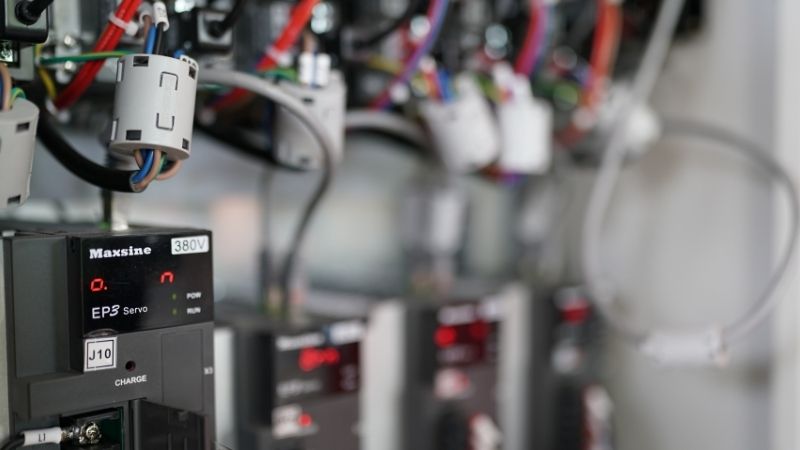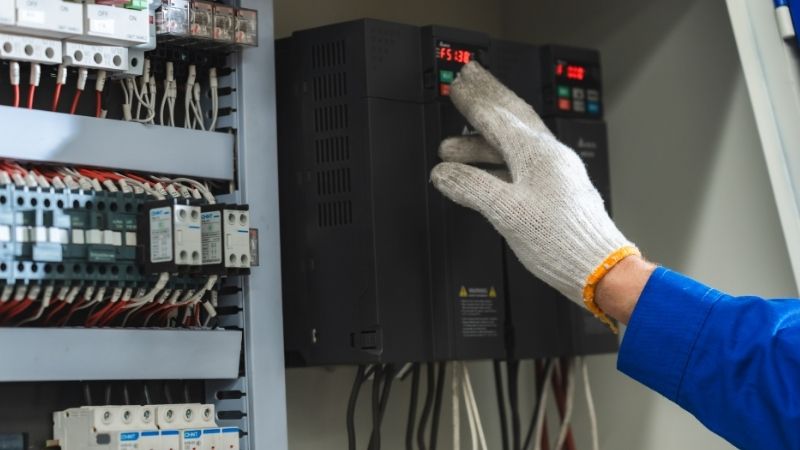Compreendendo o VFD: O que é um inversor de frequência?
Um inversor de frequência variável (VFD) é um dispositivo eletrônico que controla a velocidade e o torque de um motor elétrico. motor variando a frequência e a voltagem fornecidas ao motor. Essa capacidade leva à eficiência energética melhorada e à flexibilidade operacional aprimorada em várias aplicações.
Índice
O que é um VFD?
O Acionamento de frequência variável (VFD) é um dispositivo essencial no cenário de automação. Ele serve como um controlador que aciona um motor elétrico variando a frequência e a voltagem aplicadas a ele.
Essencialmente, um VFD ajusta a velocidade de um motor elétrico CA alterando a frequência do fornecimento elétrico. Esse ajuste dinâmico permite um controle preciso do motor, possibilitando aceleração e desaceleração suaves, o que pode melhorar significativamente o desempenho e a longevidade do motor.
VFDs são comumente usados em várias aplicações, incluindo bombas, transportadores e ventiladores. Ao controlar a velocidade do motor, os VFDs ajudam a reduzir o consumo de energia e os custos operacionais. Além disso, eles fornecem melhor proteção para seu motor contra problemas relacionados a estresse mecânico e elétrico, garantindo assim desempenho e confiabilidade ideais.
Como funcionam os VFDs?
Os VFDs operam convertendo a energia CA de entrada em energia CC e, então, de volta para uma saída CA controlada usando um inversor. Esse processo de conversão envolve vários componentes-chave, incluindo retificadores, capacitores e IGBTs (Insulated Gate Bipolar Transistors).
- Retificação: O primeiro passo envolve retificar a tensão de entrada CA para CC. Isso é obtido usando diodos ou tiristores, que convertem a energia CA em uma forma CC pulsante.
- Filtragem de barramento CC: Após a retificação, capacitores são usados para suavizar a CC pulsante, criando uma tensão CC estável. Este barramento CC fornece a energia necessária para o inversor estágio.
- Inversão: O inversor então converte a CC de volta para CA ligando e desligando os IGBTs rapidamente. Ao variar a frequência de comutação e a duração, o inversor pode controlar a frequência de saída e a tensão fornecida ao motor.
Esse processo complexo permite que os VFDs ajustem com precisão a velocidade do motor de acordo com os requisitos da aplicação, obtendo economias significativas de energia e maior eficiência.
Por que usar um VFD?
Quais são os benefícios de usar um VFD?
Os VFDs oferecem inúmeras vantagens que os tornam uma escolha popular em ambientes industriais. Alguns benefícios principais incluem:
- Eficiência Energética: Ao controlar a velocidade do motor, os VFDs podem reduzir o consumo de energia em até 50% em certas aplicações. Isso é especialmente benéfico em processos onde a demanda por velocidade varia.
- Controle de Processo Aprimorado: VFDs permitem controle preciso da velocidade e torque do motor, permitindo melhor operação de bombas, transportadores e outras máquinas. Isso leva a qualidade e consistência aprimoradas do produto.
- Estresse mecânico reduzido: Ao fornecer aceleração e desaceleração suaves, os VFDs minimizam o estresse mecânico em motores e cargas acionadas. Isso estende significativamente a vida útil dos componentes mecânicos.
- Custos de instalação mais baixos: Os VFDs geralmente podem eliminar a necessidade de componentes mecânicos adicionais, como caixas de engrenagens e embreagens, resultando em menores custos de instalação e manutenção.
Em quais aplicações os VFDs são usados?
Os VFDs são versáteis e podem ser aplicados em vários setores, incluindo:
- Tratamento de Água e Efluentes: Os VFDs controlam a velocidade das bombas, o que leva a uma economia significativa de energia e garante vazões adequadas.
- Sistemas HVAC:Em sistemas de aquecimento, ventilação e ar condicionado, os VFDs regulam a velocidade de ventiladores e compressores, melhorando a eficiência energética e os níveis de conforto.
- Fabricação: Os VFDs são amplamente utilizados em sistemas de transporte e máquinas para manter a qualidade consistente do produto por meio de melhor controle de velocidade.
Quais são os diferentes tipos de VFDs?
Como escolher o tipo certo de VFD?
Existem vários tipos de VFDs disponíveis no mercado, cada um projetado para atender às necessidades específicas da aplicação:
- Inversores de fonte de tensão (VSI): Esses são os tipos mais comuns de VFDs, que convertem tensão CC em saída CA ajustável. Eles são amplamente usados para controlar motores CA.
- Inversores de fonte de corrente (CSI): CSIs são menos comuns e são tipicamente usados em aplicações de alta potência. Eles convertem corrente DC em saída AC ajustável.
- Acionamentos de modulação por largura de pulso (PWM): Drives PWM são um tipo de VSI que usa uma técnica de modulação para criar uma saída de frequência variável. Eles são conhecidos por sua eficiência e são comumente usados em várias aplicações industriais.
Ao escolher um VFD, considere fatores como o tipo de motor, a faixa de velocidade necessária e as especificações da aplicação para garantir o desempenho ideal.
Perguntas frequentes
Um inversor de frequência controla principalmente a velocidade e o torque de um motor elétrico ajustando a frequência e a voltagem fornecidas a ele.
Os VFDs permitem um controle preciso da velocidade do motor, o que pode levar a uma economia significativa de energia ao adequar o desempenho do motor aos requisitos reais de carga.
VFDs são projetados principalmente para motores CA, particularmente motores de indução. No entanto, alguns VFDs também podem operar com tipos específicos de motores CC.
Os VFDs geralmente exigem manutenção mínima, mas é essencial verificar regularmente o acúmulo de poeira, garantir o resfriamento adequado e monitorar as conexões de entrada e saída.
Sim, muitos VFDs são projetados com recursos de proteção para operar com segurança em ambientes perigosos. No entanto, é vital selecionar um VFD classificado para tais condições.
Potencialize seus projetos com os novos e originais VFDs Omron, Mitsubishi e Schneider – em estoque, prontos agora!
Conclusão
Em resumo, os Variable Frequency Drives (VFDs) são componentes cruciais na automação industrial moderna, fornecendo controle incomparável sobre sistemas de motores elétricos. Eles oferecem inúmeros benefícios, incluindo eficiência energética aprimorada, melhor controle de processo e estresse mecânico reduzido. Entender como os VFDs funcionam e suas aplicações pode capacitar os profissionais a tomar decisões informadas na otimização de seus processos de automação.
- Os VFDs controlam a velocidade e o torque dos motores elétricos.
- Eles aumentam a eficiência energética e reduzem os custos operacionais.
- Vários tipos de VFDs estão disponíveis, incluindo VSI e PWM.
- A manutenção regular garante desempenho e longevidade ideais.
- Os VFDs são versáteis e aplicáveis em vários setores.
Procurando por um Inversor novo e original para seus projetos? Na Kwoco, temos em estoque o inversor mais recente das principais marcas como Omron, Mitsubishi, e Schneider. Compre com confiança — envio rápido, qualidade garantida! Compre agora
Contate-nos
Basta preencher seu nome, endereço de e-mail e uma breve descrição de sua consulta neste formulário. Entraremos em contato com você em até 24 horas.
Você também pode achar esses tópicos interessantes
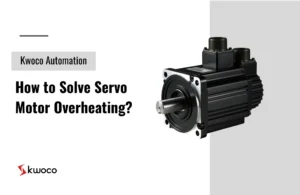
Como resolver o superaquecimento do servo motor?
10 insights essenciais sobre o PLC OMRON série CJ2 Problemas de superaquecimento com servo motores podem interromper as operações e causar tempo de inatividade desnecessário,
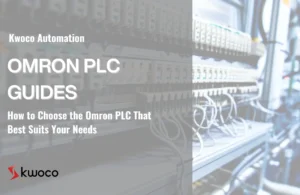
Como escolher o PLC Omron que melhor atende às suas necessidades
Como escolher o PLC Omron que melhor atende às suas necessidades Lutando para encontrar o PLC certo para sua indústria
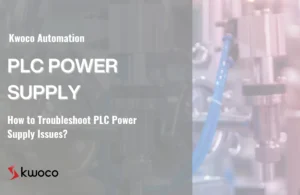
Como solucionar problemas de alimentação do PLC?
Como solucionar problemas de fornecimento de energia do PLC? No mundo da automação industrial, uma fonte de alimentação confiável é o coração

